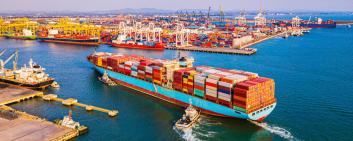Preferential origin
Free trade agreements generally cover the cross-border movement of goods between contracting parties. Goods that comply with the rules of origin of the agreement in question benefit from customs concessions or exemptions. It should be noted, however, that some of the agreements have different rules of origin; additionally, there are different requirements depending on the customs tariff number. The goods must originate from one of the contracting states in order to benefit from preferential treatment. Proof of preferential origin must be provided by means of a movement certificate (EUR 1, EUR-MED, EUR 1 CN) or a declaration of origin.
Non-preferential origin (autonomous origin)
In many countries, a proof of origin is required for the import of goods. A certificate of origin issued by the cantonal Chamber of Commerce and Industry serves as proof. However, this does not result in a customs exemptions or reductions as in the case of preferential origin with free trade agreements. A certificate of origin proves the goods’ country of origin. The authorities of many countries require that goods to be imported into their territory are accompanied by certificates of origin or certified commercial invoices. These documents are required for various reasons, primarily related to commerical policy – such as to monitor import restrictions, anti-dumping duties, redressive duties, trade embargoes, protective and retaliatory measures, quantitative restrictions or tariff quotas, but also for statistical purposes or simply to confirm the origin of a good.
Swissness
Swiss products and services enjoy an excellent reputation at home and abroad. Swiss indications of origin are therefore popular and frequently used; resultingly, geographical origin and customs origin are often confused or wrongly equated. Only products with a certain value (for industrial products) or percentage of weight (for food products) of exclusive Swiss origin may be designated as “Swiss Made” or “Made in Switzerland”.
- Criteria for industrial products under the new Swissness rule from 1 January 2017: 60% of the manufacturing costs must be incurred in Switzerland AND the essential manufacturing step must be carried out in Switzerland.
- Criteria for foodstuffs: 80% of the weight of the raw materials must come from Switzerland (100% in the case of milk) AND the main processing step must take place in Switzerland (there are many exceptions here!).
- Criteria for services: The registered office and the place of effective administration must be in Switzerland. The Swissness rules have nothing to do with customs rules.








